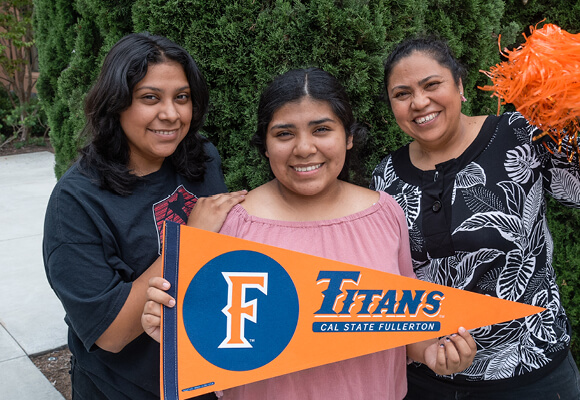Tax time is just around the corner, which means your clients may be looking more closely at charitable giving options as they pull together information for 2023 filings. In this issue, we’re covering two topics that may capture the attention of philanthropic individuals and families this year while they’re talking with advisors about tax preparation.
- Reviewing tax returns with a client can feel like an administrative task that simply needs to get done. But don’t overlook the value of the review process to point out planning opportunities for this year and beyond, especially related to charitable giving and working with San Diego Foundation (SDF).
- Each philanthropic client’s goals are unique, and charitable planning is not a one-size-fits-all proposition. SDF offers charitable giving vehicles to meet many clients’ needs. Discover the many types of funds available through SDF and how each may fit certain client situations.
As always, we appreciate the opportunity to work with you and your clients during tax time and every other time of year. We’re your partner in charitable giving, and it is our pleasure to help you serve your philanthropic clients as they support the causes they love.
Tax Return Reviews: Level Up Charitable Giving Plans
Tax time has its silver linings! Going over a tax return with a client helps start a productive conversation about ways to plan gifts to charity more effectively. As you scan 2023’s charitable contributions, talk with your client about whether those charitable gifts were made with cash or with other assets, and then steer the conversation toward discussing the most effective assets to give to charity during 2024 and beyond.
Here is a four-point checklist that can help you advise your clients about the range of charitable giving options.
- Remind clients that cash is not king when it comes to charitable giving. Cash is typically not the most tax-effective form of charitable giving. Instead, encourage clients to consider giving highly-appreciated assets, including publicly traded stock, to their fund at SDF to support their favorite charities.
- Think even beyond stock. Encourage clients to explore not only highly-appreciated stock as a potential gift to charity but also the various forms of “non-cash” assets that can make great charitable gifts. After all, American households’ most valuable assets are retirement accounts and personal residences, not cash. Examples of assets that could be excellent charitable gifts depending on the client’s circumstances include gifts of real estate, closely-held stock, collectibles, and, for clients who are age 70 ½ and older, direct transfers from an IRA (known as a Qualified Charitable Distribution) to a field-of-interest or unrestricted fund at SDF.
- Make it easy on yourself and your client. Reach out to us for assistance! We are happy to help you and your client evaluate the best assets to give to a donor-advised or other type of fund at SDF to achieve the client’s charitable goals.
- Close the loop on IRS reporting. Remember that the reporting requirements are different for non-cash gifts to charity versus cash gifts. Ensure you are familiar with IRS Form 8283, which must be filed with any tax return claiming a deduction for non-cash assets valued at $500 or more. The IRS expects strict adherence to the terms of the form, especially the requirement for a qualified appraisal. SDF can help in certain areas for receipting and reporting.
Opening up the full range of charitable giving options for a client can help you structure a holistic estate and financial plan that meets the client’s objectives for family wealth, philanthropy and tax effectiveness. Reach out to the team at San Diego Foundation anytime to discuss techniques and strategies.
Fund Types Tailored to Your Client’s Charitable Goals
Just as each of your clients has a unique estate plan and financial plan to meet the client’s particular situation and goals, each of your philanthropic clients needs a unique charitable giving plan.
For example, for some clients, consistently giving shares of highly appreciated stock to their fund at SDF makes the most sense for their charitable goals and their mix of assets. For other clients, leaving a bequest to SDF to support specific areas of interest is the best fit.
SDF offers charitable giving vehicles to meet many clients’ needs. In most cases, a single client can benefit from setting up multiple funds of different types.
Here’s a quick primer on a few of the most popular fund types.
Donor-Advised Fund
A DAF enables your client to establish a specific account for charitable giving. Your client makes tax-deductible contributions of cash (or, ideally, stock or other highly-appreciated assets) to the fund and then recommends grants to favorite charities.
Unrestricted Fund
SDF has its finger on the pulse of the community’s most pressing issues. An unrestricted fund allows your client to support community’s most pressing needs as they emerge. One of the biggest benefits of a community foundation is its perpetual structure that allows clients and their families to support nonprofits that evolves as priorities in the region shift.
Field-of-Interest Fund
Clients who want to target their giving to specific areas of community need (such as education, health, environment, or the arts) can set up a field-of-interest fund to establish parameters for grantmaking under the ongoing guidance and expertise of SDF’s staff.
Designated Fund
A designated fund allows a client to give directly to a specific agency or purpose. Over time, SDF’s staff manages the distributions from the fund according to the terms established by your client.
Nonprofit Agency Fund
An nonprofit agency fund is similar to a designated fund, except, in the case of an agency fund, the source of the initial contribution is the beneficiary nonprofit organization itself, not a donor or donors, as is the case with a designated fund. If your client serves on boards of directors of charities, they’d likely be interested in learning more about agency funds. Suppose you represent nonprofit organizations and their board members in your practice. In that case, it’s helpful to remember that organizations frequently establish agency funds at SDF to set aside endowment reserves or rainy-day funds. Our team is adept at navigating the specific accounting standards unique to this arrangement.
Scholarship Fund
Clients can set up funds to support students’ educational pursuits based on the parameters and application requirements they outline with help from the experts at SDF.
Here’s a pro tip: If you represent clients aged 70 ½ and older, consider recommending a Qualified Charitable Distribution from a client’s IRA to a fund at SDF. All of the fund types noted above are eligible recipients, except donor-advised fund.
We look forward to working together to discover the type of fund (or funds!) at SDF that could be a good fit for each client’s unique charitable giving needs.
Learn More
For nearly 50 years, we have partnered with an extensive network of wealth advisors, estate planning attorneys, tax planners and other financial advisors to help high-net-worth clients and families achieve financial planning objectives and charitable giving goals while maximizing tax deductions.
If you want to learn how we can help meet your clients’ financial planning and charitable giving goals in 2024, contact me at (858) 245-1508 or jrogers@sdfoundation.org.





